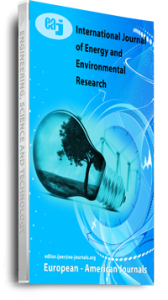In this study, fruits and vegetable market wastes were used as substrates in biogas production under psychrophilic, mesophilic and thermophilic conditions. Slaughterhouse waste consisting of blood and diluted rumen fluid mixture was used as inoculum with seven days retention time. Influence of C: N ratios of the unique mixtures of vegetables found in the market were investigated. On average, the vegetable wastes found at the market contained >86% moisture, 5 – 12% volatile solid and 0.46 – 2.06% ash matter on a wet basis. The protein range was between 0.57 – 3.49% with high-fat content being recorded in avocado (Persea americana) wastes at 9.03%. The highest cumulative biogas was recorded in wastes mixture at 3500ml on seventh day while low biogas yield was registered for wastes with C: N ratios greater than 35:1 like avocado and lower than 10 like coriander and courgette wastes. The optimum operation pH was in the range of 6.80 – 7.2.It can be concluded that the highest cumulative biogas was generated from fruits/vegetable mixture at 3500ml in mesophillic conditions. This study recommends pH adjustment to 6.8 – 7.2 in market wastes and C: N ratios of 20 – 25 for large scale biogas production of wastes found in the Dagoretti Market.
Keywords: Biogas, inoculum, market wastes, proximate properties

